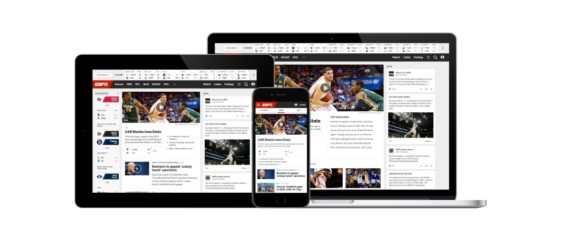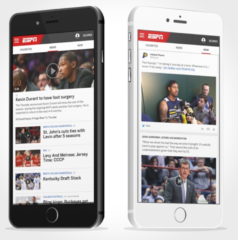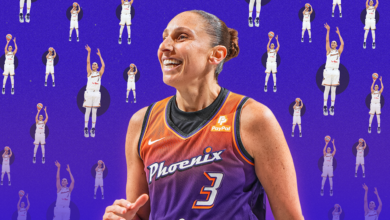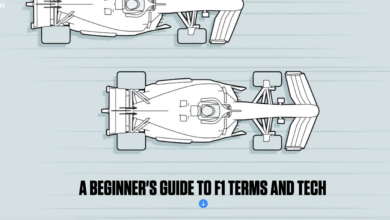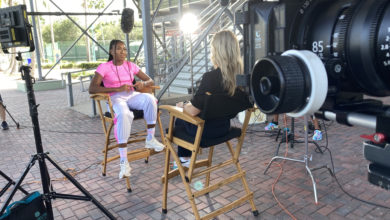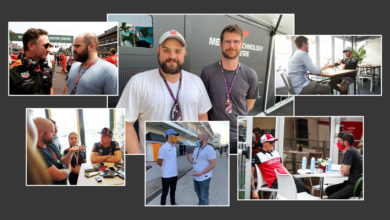As site relaunches, John Skipper recalls ESPN.com’s formative years
Editor’s Note: In celebrating its 20th anniversary, ESPN.com unveiled its new site today. It’s the first major makeover of ESPN.com in more than five years, and it is completely rebuilt from the ground up. This week, Front Row presents discussions with ESPN.com’s leaders past and present exploring the sports news and information site’s growth.
Bob Iger, on ESPN.com
“The moment we were able to put content directly into the hands of consumers, on devices they carry with them, changed everything. It changed what they expected from us, and that changed how we thought about our business. Our focus became much more consumer-centric, we watched how people consumed media and built models around their behavior; and our brands became more important than ever as consumers look for brands they recognize and trust as a way to navigate through the chaos and clutter of endless choices. We made the early decision to embrace the change and help lead the disruption, and ESPN.com has been at the forefront, pushing the envelope over and over again with innovative ideas and new models that create value for everyone involved, especially sports fans.”
After joining ESPN in 1997 to launch ESPN The Magazine, ESPN President John Skipper was tasked with developing ESPN.com, which he managed from 2000 to 2003. The early 2000s were a critical time for ESPN.com and a nascent online industry as media companies like ESPN explored digital opportunities. Front Row asked Skipper a few questions about those formative years at ESPN.com:
What do you remember most about that early period of the web and putting ESPN online?
It was an exciting time because we knew it was a tremendous opportunity to reach sports fans in a new way and expand on what we were doing on television and at The Magazine. I did believe that the world was going to change, but it didn’t take a clairvoyant to see that print was going to be challenged and digital was the future. At the time, ESPN.com was struggling for identity. Sportsline.com was doing an excellent job.
I didn’t know much about digital at the time, but as I got up to speed, my quick assessment was that we needed to improve the quality of the content. So I brought in John Walsh [who recently retired from his position as ESPN’s Executive Vice President and Executive Editor], who had been my colleague at The Magazine, and we had a bunch of technology-oriented people in Seattle – including [Executive Vice President & Chief Technology Officer, ESPN] Aaron LaBerge and [Creative Director at ESPN Digital Media] Dan Benshoff and the late John Zehr [former ESPN Mobile Senior VP & GM] – and we began to improve the content.
What have been the most important developments (or setbacks) since ESPN.com’s start in 1995 that shaped the way sports, digital media and technology intersect? And what will shape the next 20 years? Executive Vice President, Digital & Print Media, John Kosner, answers those questions:
“Sports media was once scarce. But because of the development of digital media and 20 years of espn.com specifically, the model has reversed. Now – in a world of unlimited choice – quality wins, brand wins, innovation wins. For two decades online, ESPN has set the agenda. That’s why our leadership position is strongest today. In the most profound way, sports has exploded at the intersection of mobile devices and social media networks. ESPN has always been a social network for sports and has benefitted through its work with leading third-party social networks and by always aggressively programming its content on mobile. ESPN will become the true worldwide leader in sports news and information. Global expansion will bring ESPN to audiences that dwarf the size of what we reach today. Today, we produce the world’s best NBA editorial content but it is largely enjoyed by an English-language audience. There are NBA fans all over the globe. We can and will reach them all. Sports will become a bigger tent — ESPN will offer more coverage of more sports, more languages and serve more diverse and distant audiences — women and men.”
So, you brought together a combination of journalists and technologists?
We decided early on that ESPN.com would not be a newspaper sports section on the web, nor would it be a technology-driven automated feed for scores. It was about taking advantage of the new capabilities that we knew were coming to consumers, so we could create great content, consistent with the ESPN brand. Just like today.
I did make the decision that we were going to have a good looking site with color and good design, photography and graphics. We were going to have long-form journalism with the very best writers like Hunter S. Thompson, Ralph Wiley, David Halberstam, Bill Simmons and others. We set out to create a better, more interesting site. It took both great content people and great technology people to do it.
What were other important moments or decisions from those early days?
There were a few seminal moments. One was a distribution deal we made with MSN, where we became the content provider for sports for the MSN Network. I think it was pioneering because we basically decided to trade content for traffic. At the time we were getting about 6 million unique users a month. After our deal with MSN, we went up pretty quickly to more than 20 million, and we’ve never looked back.
Another crucial moment was our creation of the “big ad unit,” which was the first fixed placement ad on the Internet. A few other places may claim to have had the idea, but I think we did it first. I was in Detroit to meet Ford’s head of marketing, and I wanted to show him the ad he bought. We logged on, and it wasn’t there. Why? Because we were doing a banner rotation.
So we clicked it again. . . and something else showed up. It was like a slot machine! Afterward, I said, “Darn it. I’m never going into a marketer’s office again and not be able to find the ad. That’s a ridiculous way to run advertising.” I decided we’re going to put a big ad at the top that you can see. We told our advertisers, we’re not going to sell you a click through rate. We’ll sell you a cost per thousand, fixed placement ad.
The third thing was that we wanted a video player that would start without buffering, so we could show highlights immediately when the page loaded. We called it ESPN Motion, and Disney helped us build that. As far as I know it was the first real-time video player online.
